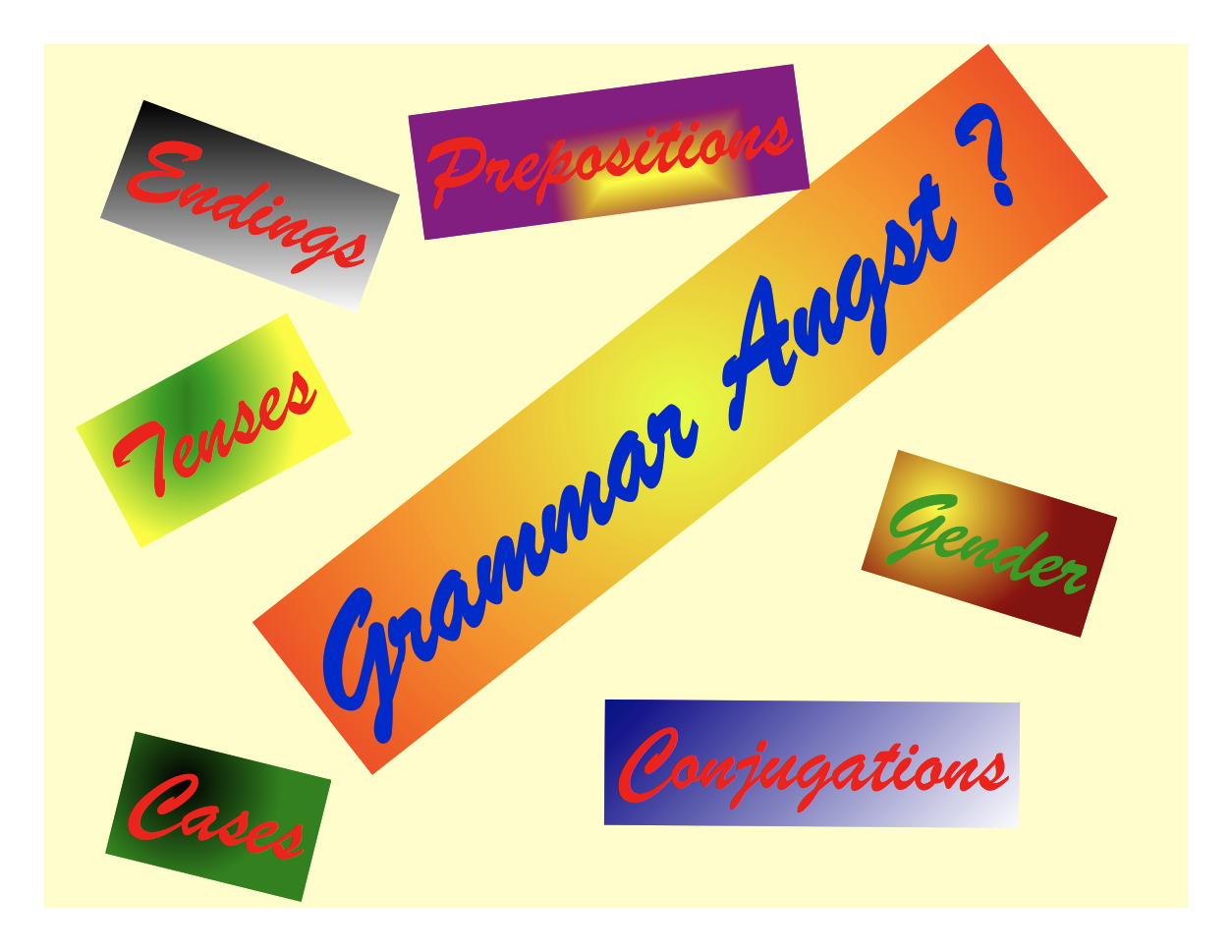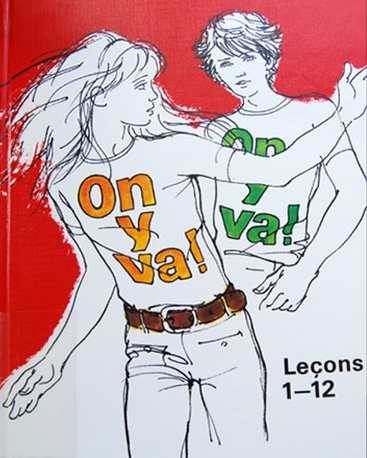Five Simple Steps to Beat your Grammar Angst
 When you're learning a new language to communicate, grammar should not be your main worry.
When you're learning a new language to communicate, grammar should not be your main worry.
Focus rather on understanding and speaking, and discover grammar points along the way. Grammar is best consumed gradually, in small doses, and in little steps.
My current experience with learning Swedish reinforces this notion for me again and again.
Simple Grammar Explanations
Find a book or site that gives you simple explanations, ones that you can relate directly to the vocabulary you're learning. For example, as you're practicing basic phrases and sentences, you can discover, little by little:
- the gender of nouns
- articles (definite & indefinite)
- pronouns (including the familiar and formal "you," and when to use these)
- present tense verb endings; conjunctions (and, but or)
- question words (who, what, where, when, etc.)
- the word order of simple statements and questions.
Reinforcement Steps
Once you've grasped a grammar point, you'll reinforce your understanding every time you see the structure again - as you're learning new words and phrases or reviewing old ones.
For example, in Swedish, I learned that the definite article is attached to the end of a noun. So now I know the difference between "torg" (square) and "torget" (the square). Whenever I see the “-et / -t" (neuter gender) or the “-en / -n” (common gender) ending, I keep this in mind for understanding the meaning of the word.
Prepositions
With a knowledge of some essential phrases and grammar basics, you're now ready to learn a handful of prepositions, as they're used in common expressions. Some of them you may have encountered already in phrases you learned, others may be new or have a second, less obvious meaning.
Each language has its own favorites. For example, in Swedish I started with: av (of, by); från (from); hos (with, at); i (in, on, before [time]); på (on, in, at); till (to [a place]); med (with); över (over, above, across, past [time]); åt (to [a person]).
Research & Discovery
As a next step, choose a simple text that interests you, about half a printed page long. Now, using a dictionary, try to read it for meaning, or even try to translate the sentences into English.
Pay special attention to what holds the text together: the connecting words (and, but, also); negative words (not, never, no one); time markers (today, tomorrow, yesterday, soon, earlier, etc.); verb tenses. At this stage, you're beginning to understand how the language works.
Keep Notes
I'm a huge fan of keeping a small spiral (3"x5") notebook in which I write down, in pencil, phrases I want to memorize. I also list essential grammar points.
For example, for Swedish, I noted down the phrases: "en kvart över twå" (a quarter past two) and "en kvart i twå" (a quarter to two).
This phrase pair helps me recall that, in the context of time, "över" means "past the hour" and "i" means "before the hour."
In my experience, grammar is something you build from the ground up, slowly, step by step. As you're learning your new language, you become aware of and want to understand grammar points - all in the context of phrases and sentences that you are reading or hearing.
In short, grammar is not something you learn first and then apply but rather something that you discover and learn over time.

